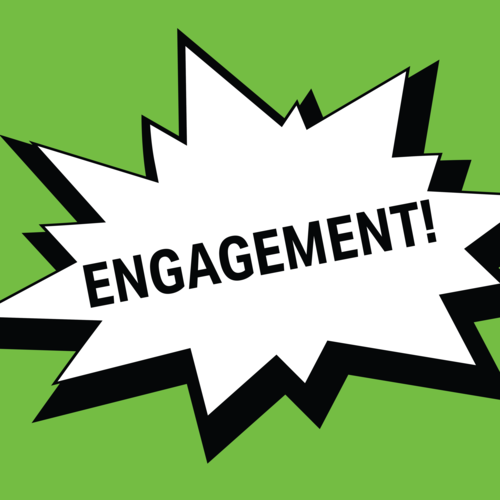Evidence-based practices deliver greater outcomes for individuals and programs is supported by research. But they can only reach their full potential when people are engaged with learning and utilizing these best practices.
What is Engagement?
The definition of ‘engagement’ can be ambiguous, vague, or narrow. Often it’s taken to mean simply ‘enrollment’ or ‘attendance’. But true engagement has multiple dimensions. It properly refers to making an emotional connection with and an intellectual investment in one’s learning or growth.
Definition: Engagement refers to the degree of participation, attention, curiosity, interest, optimism, and passion that people show when they are being taught and are learning. Learners who are inquisitive, interested, and inspired tend to learn more; learning tends to suffer when learners are bored, dispassionate, disaffected, or otherwise “disengaged.”
Behavioral engagement extends beyond physical attendance at treatment or counseling. It relates to engaging in new outcome-directed behaviors as a result of being emotionally and intellectually engaged. People who are truly engaged;
“…show sustained behavioral involvement in learning activities accompanied by a positive emotional tone. They select tasks at the border of their competencies, initiate action when given the opportunity, and exert intense effort and concentration in the implementation of learning tasks; they show generally positive emotions during ongoing action, including enthusiasm, optimism, curiosity, and interest.” Skinner, E. A., & Belmont, M. J. (1993). Motivation in the classroom. Journal of Educational Psychology, 85(4), 571.
Engagement cultivates a sense of belonging; a belief that the learning is applicable to my situation, that it has value, and will help me to produce positive outcomes. The behavioral traits mentioned in the quote above are the product of engagement and are precisely the type of self-motivated actions that generate greater outcomes.
Engaging Learning Experiences — Examples
Engagement for Visual and Auditory Learners – Play Video Now
Engagement for Kin-esthetic, Verbal, Visual, Logical, and Auditory Learnershttps://player.vimeo.com/video/537953582?app_id=122963
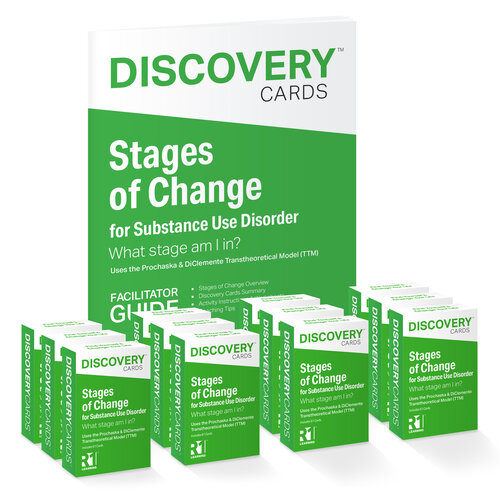
How To Create Greater Engagement
The primary path to generating greater engagement is to create an emotional (affective) and intellectual (cognitive) connection with the ones situation and circumstances. The relevance and relatability of the material to one’s own circumstances and the ability to apply it to oneself plant those connections. By distilling complex models into an organized structure and providing common and relatable traits, well structured content fosters connection with evidence-based strategies and cultivate a sense of belonging with both the models and with one’s own situation. Two ways to make these connections and feed engagement are, 1) building a common vocabulary to aid in effective expression and communication of thoughts, feelings, and ideas, and; 2) targeting multiple styles of learning in order to maximize reach and appeal.
Building a Common Vocabulary
A primary purpose of the R1 Learning System and the Discovery Cards is to build a common vocabulary for individuals, family members, and practitioners. Evidence-based and best practice models and theories are new to many people. Like with other subjects, we need to first learn the basics before we can take action. Building a vocabulary is the first step.
PROCESS AND CONTEXTUAL MODELS
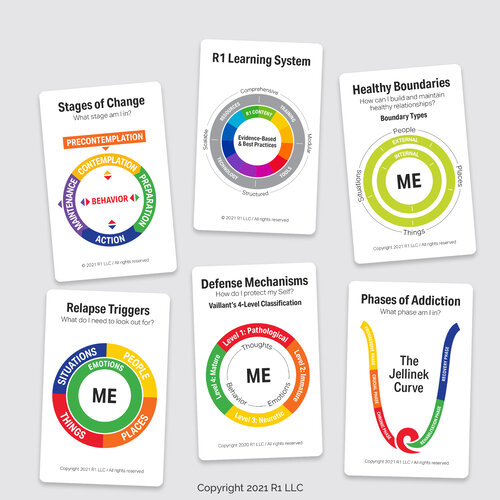
VOCABULARY – ENABLING EXPRESSION

Models are visual symbols used to organize knowledge, concepts, thoughts, or ideas, and the relationships between them. The main purpose of a model is to provide a visual aid to facilitate learning and instruction. Two types that we use with the Discovery Cards are:
Process Models: A series of actions or steps taken in order to achieve a particular end.
Contextual (Ontological) Models: These models show properties and relationships between a set of concepts and categories.
Discovery Cards put model information into color-coded categories to improve learners’ ability to understand and retain the information. This enables them to more quickly digest and process the model, apply it to their own experience, discuss it with others, make a plan, and take action.
Ones ability to identify and express thoughts, emotions, and behavior requires words. Building one’s vocabulary is central to speeding up this process.
- Vocabulary – A body of words in a particular language, branch of knowledge, or field of study.
- Taxonomy – A body of words defined into groups; the classification of words into ordered categories.
As people learn, their vocabularies expand and grow and enable greater understanding and greater abilities to express thoughts, feelings, and beliefs. The more individuals can describe and express what’s going on with them, the sooner they can make healthy choices, take action, and move forward with healthier behaviors. The Discovery Cards not only create a shared vocabulary, but a taxonomy to help maximize engagement and learning.
Reaching Multiple Learning Styles
Learning styles are the ways that individuals absorb, process, comprehend, and retain information. The R1 Learning System was designed to engage with a range of learning styles in order to reach the most people and to maximize learning. The five primary learning styles include:
- Visual – Learn by seeing
- Auditory – Learn by hearing
- Verbal – Learn through words (hearing, speaking, writing)
- Physical (Kinesthetic, Tactile) – Learn by doing
- Logical (Mathematical) – Learn through problem solving or reasoning.
Every learning setting can act as your own learning lab for how to reach more individuals, increase engagement, and learning outcomes of your sessions. Observe yourself or invite a colleague into your next group to get feedback and ideas on how to incorporate more approaches for connecting to different styles.
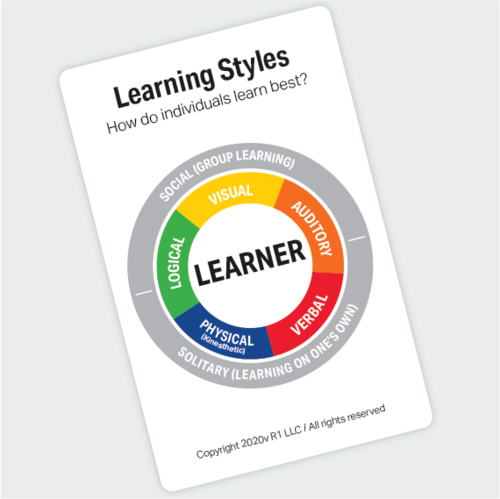
5 Learning Styles for Engaging Your Clients and Improving Outcomes
Questions to Explore
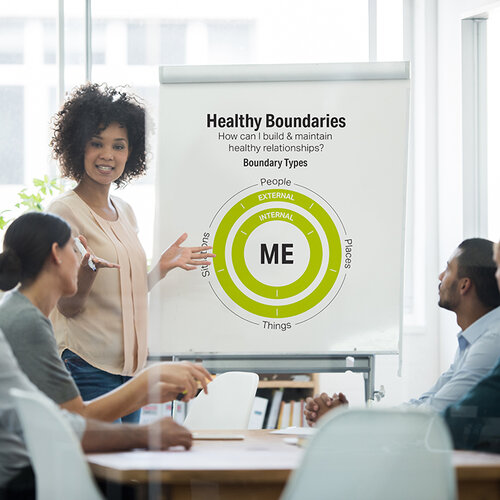
Answer these questions for yourself or someone you are working with.
- How well does your curriculum use simple and relatable models to help the learner grasp and process the information being presented in a structured way? Explain.
- What types of models does your curriculum use?How well does your curriculum provide clear definitions for the key terms being covered?
- Does your curriculum provide concrete lists of words, short phrases, or examples for key concepts covered? How do these examples help individuals connect to their own experience and express their thoughts and ideas?
- Which of the five primary learning styles does your curriculum reach most effectively? Least effectively?
- How can you modify your facilitation of the curriculum to reach additional learning styles? Explain.
References
Skinner, E. A., & Belmont, M. J. (1993). Motivation in the classroom. Journal of Educational Psychology, 85(4), 571
Copyright 2021 R1 LLC / All Rights Reserved. Use of this article for any purpose is prohibited without permission.
Engage, Educate, and Equip Your Practitioners
The R1 Learning System and the Discovery Cards Group Kits enable programs to implement workforce training programs strategically. Contact us to learn more about how to best implement the R1 Affirmations topic in your program, train your team, and engage clients in service. Visit the R1 Store to learn more about our training, tools, and technology resources. The Discovery Cards are an amazing tool for exploring these topics with individuals or groups.
One-on-One Engagement
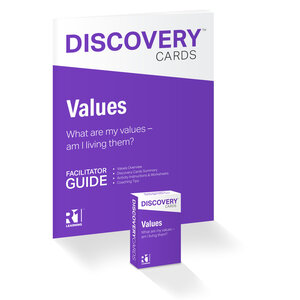
Group Engagement
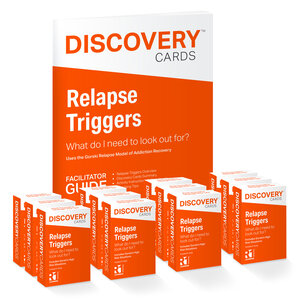
Virtual Engagement – Coming 2021

Here are a few ideas to help you learn more about R1 and engage others on this topic:
- Share this blog post with others. (Thank you!)
- Start a conversation with your team. Bring this information to your next team meeting or share it with your supervisor. Change starts in conversations. Good luck! Let us know how it goes.
- Visit R1LEARNING.com to learn more about R1, the Discovery Cards, and how we’re creating engaging learning experiences through self-discovery.

